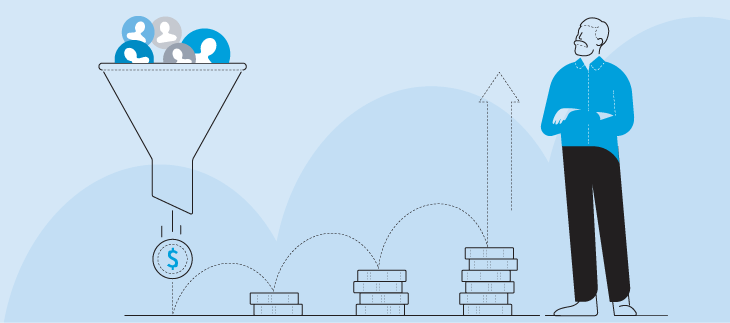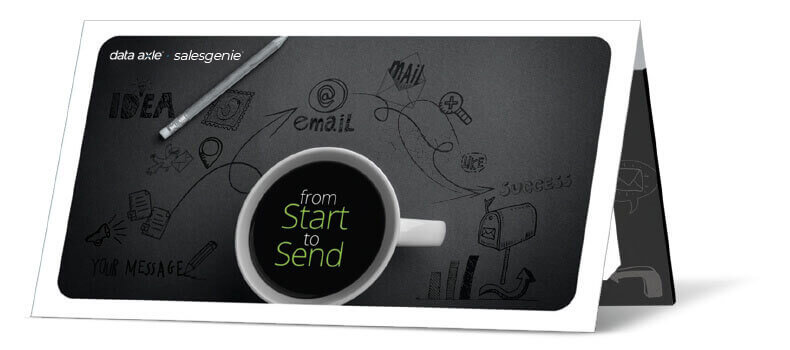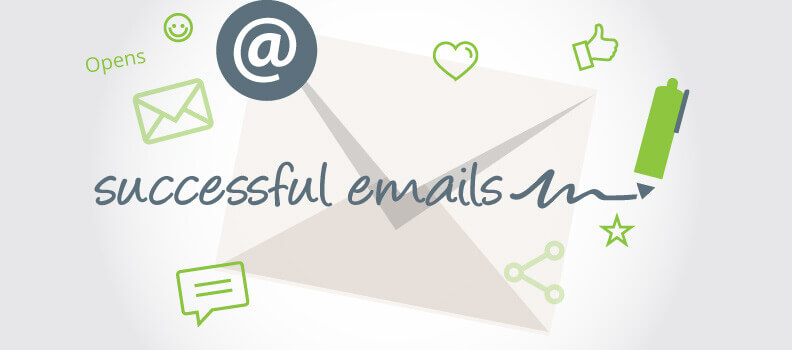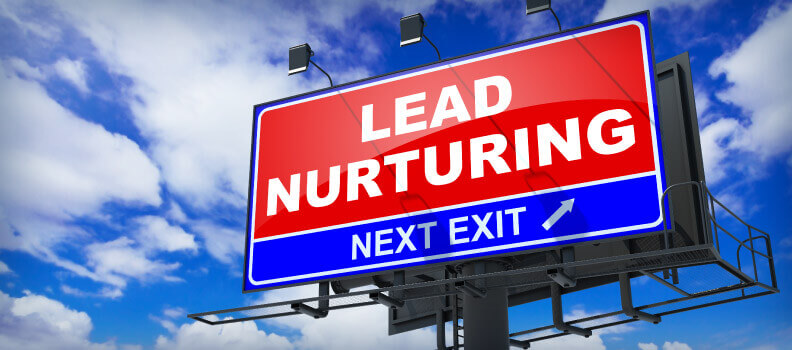In today’s competitive business landscape, having a great product isn’t enough. To consistently attract, engage, and convert prospects into loyal customers, you need a structured approach—a sales funnel.
A well-optimized sales funnel guides potential customers through the buying journey, from initial awareness to purchase and beyond. When executed effectively, it not only increases conversions but also enhances customer retention and lifetime value. For small and medium-sized businesses (SMBs), a well-defined sales funnel can be the difference between stagnation and sustainable growth.
With targeted prospect information, you can deliver the right message to the right people at the right time. This guide will walk you through the essentials of building a high-converting sales funnel—from understanding key stages to implementing strategies that drive conversions.
What Is a Sales Funnel?
A sales funnel visually represents the customer journey, illustrating how prospects move from discovering your brand to making a purchase. The funnel shape reflects how many people enter at the top and how fewer, more qualified leads reach the bottom.
Why Does a Sales Funnel Matter?
A well-structured sales funnel delivers multiple benefits: predictable growth through reliable revenue forecasts based on conversion rates; marketing efficiency by allocating resources effectively; enhanced customer experiences by providing the right information at the right time; and alignment between sales and marketing teams with clear roles to guide prospects seamlessly through their buying journey.
Sales Funnel Example
Following is an example of how a B2B software company might structure its funnel.
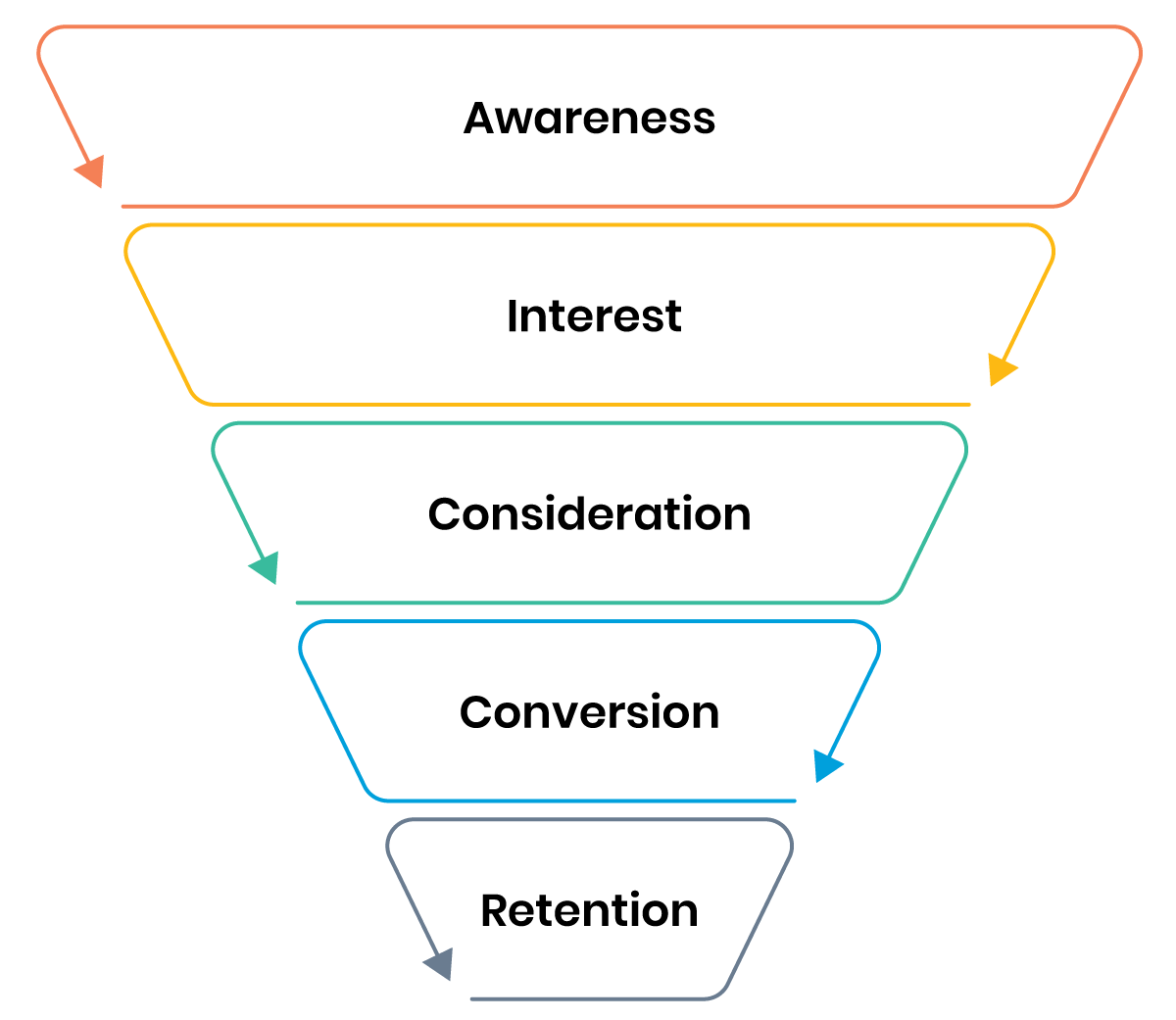
- Awareness: Blog content and LinkedIn ads introduce productivity challenges.
- Interest: Free webinars educate prospects on potential solutions.
- Consideration: Free trials and personalized demos encourage exploration.
- Conversion: Onboarding support helps turn trial users into paying customers.
- Retention and advocacy: Ongoing check-ins and feature updates foster loyalty.
Each stage builds trust and delivers targeted messaging to guide prospects toward a purchase.
Key Stages of a Sales Funnel
In today’s digital-first world, businesses need a systematic approach to guide prospects from initial awareness to becoming loyal advocates. This journey—known as the sales funnel—is the backbone of a sustainable, growth-oriented business.
A well-structured sales funnel ensures that every potential customer experiences a thoughtful progression toward purchasing. Let’s explore each stage and how businesses can optimize it to maximize conversions.
Stage 1: Awareness – The First Introduction
The journey begins when a potential customer first encounters your brand through blog posts, social media campaigns, advertisements, or word-of-mouth recommendations. The goal is to capture attention through strategic content marketing.
For example, a company selling premium fitness equipment might publish articles like “5 Home Workouts for Busy Professionals” or produce videos demonstrating home gym setups, while running targeted social media ads showcasing their products in action.
But awareness alone is not enough. A brand must spark curiosity and encourage potential customers to take the next step, whether that’s signing up for a newsletter, downloading a free guide, or following the brand for more updates. This stage sets the foundation for future engagement and supports prospects in developing an interest in the brand and what it offers.
Stage 2: Interest – Cultivating Engagement
Once awareness is established, the next step is to turn casual observers into engaged prospects. They’ve shown curiosity by signing up for a webinar, downloading a resource, or following your brand. Now, the challenge is to keep them intrigued and build trust.
For our fitness company example, this could mean offering a free downloadable guide like “The Ultimate Home Workout Plan” in exchange for an email address. A well-crafted email sequence follows, sharing valuable content: workout tips, success stories, and expert insights. Meanwhile, remarketing ads subtly remind them of the fitness equipment they viewed.
At this stage, focus on value-driven engagement rather than aggressive selling. Personalized emails, interactive social media content, behind-the-scenes glimpses, and educational webinars help create a deeper connection. The more prospects see your brand as a trusted resource, the more likely they are to move forward in relationship (aka, progress through the sales funnel).
Stage 3: Consideration – Addressing Hesitations
Interest alone won’t close the sale. Prospects at the consideration stage are evaluating options, comparing competitors, and weighing pros and cons. Businesses must anticipate and address concerns, providing clear reasons why their solution is the best choice.
Our fitness brand might share customer testimonials, detailed product comparisons, and video demonstrations showcasing unique features. A quiz like “Find Your Perfect Home Gym Setup” could guide potential buyers toward the best product for their needs. Additionally, offering a free virtual consultation adds a personal touch, reassuring prospects they’re making the right choice.
Transparency is vital here. Businesses should proactively answer common objections—price, quality, usability—through case studies, FAQs, and clear messaging. This is where brands must go beyond informing to influencing action.
Stage 4: Conversion – Sealing the Deal
By this stage, the prospect is nearly ready to commit. The last thing a business wants is for hesitation or complexity to derail the process. This is when it’s important to send trust signals that encourage the sale.
To support a buying decision, our fitness company might offer a limited-time discount or highlight a 30-day money-back guarantee to eliminate risk. A seamless, mobile-friendly checkout process ensures frictionless buying. Live chat support stands by for last-minute questions, while clear financing options make higher-priced equipment more accessible.
A well-crafted call-to-action (CTA) becomes the difference between a lost lead and a new customer. Whether it’s a bold “Get Started Today” button, an exclusive first-time buyer incentive, or a personalized follow-up email, the conversion stage is about making it easy, irresistible, and risk-free for the customer to take action.
Stage 5: Retention and Advocacy – Creating Lifelong Customers
The sale isn’t the end—it’s just the beginning of a long-term relationship. Businesses that invest in retention strategies build a loyal customer base that not only continues to buy but also advocates for the brand.
Post-purchase engagement might include a personalized onboarding experience, an exclusive loyalty program, and periodic check-ins to ensure satisfaction. A thank-you video from the founder, follow-up emails with usage tips, and an invitation to a VIP community create a sense of belonging.
Encouraging customers to refer friends through a referral program and share their experiences further strengthens the brand’s reputation and attracts new buyers organically.
By prioritizing customer success, businesses turn one-time buyers into repeat clients and brand ambassadors, fueling long-term growth.
Step-by-Step Guide to Building a Sales Funnel
Here’s how to create an effective sales funnel process, illustrated by our fictional premium fitness gear retailer selling through their e-commerce store.
1. Identify Your Target Audience
The foundation of an effective funnel is a clear understanding of your ideal customer. Create detailed buyer personas with information like:
- Industry and company size
- Job title and responsibilities
- Pain points and motivations
- Preferred communication channels
- Decision-making factors
Data intelligence tools like Salesgenie can refine your targeting by providing up-to-date prospect insights, ensuring your funnel focuses on the right audience.
2. Create a Compelling Lead Magnet
A lead magnet is an irresistible offer that encourages prospects to share their contact information. Make sure it provides immediate value and solves a specific problem.
High-performing lead magnets include eBooks, white papers, industry reports, checklists, templates, calculators, webinars, quizzes, free trials, or exclusive discounts.

3. Develop a Lead Nurturing Strategy
Capturing leads is just the beginning—you need to strategically build relationships and keep prospects engaged.
Key nurturing tactics include segmented email campaigns tailored to different personas, content that answers key concerns at each stage, retargeting ads that keep your brand top-of-mind, chatbots for instant engagement, and personal outreach for high-value leads.
Customer relationship management (CRM) integrations can streamline and personalize lead nurturing, allowing your team to focus on high-priority prospects while automation handles routine follow-ups.
4. Optimize Your Sales Pages & CTAs
Craft your sales pages and CTAs with clear, persuasive messaging. Consider A/B testing to refine your pages and CTAs based on actual performance.
Best practices for high-converting sales pages include benefit-driven headlines that address customer pain points, concise copy emphasizing value propositions, social proof (testimonials, reviews, case studies), engaging visuals (videos, diagrams, product images), and mobile optimization for seamless browsing.
5. Implement an Effective Follow-Up System
Not all prospects will convert immediately. A robust follow-up system ensures you stay connected through automated email sequences triggered by specific actions, SMS marketing for time-sensitive offers, sales outreach for high-intent leads, remarketing campaigns to re-engage past visitors, and internal lead scoring to prioritize warm leads.
Prospecting tools can help track engagement and automate follow-ups, so no leads slip through the cracks.
Sales Funnel Best Practices
As technology and consumer behavior evolve, adapt your sales funnel to stay ahead.
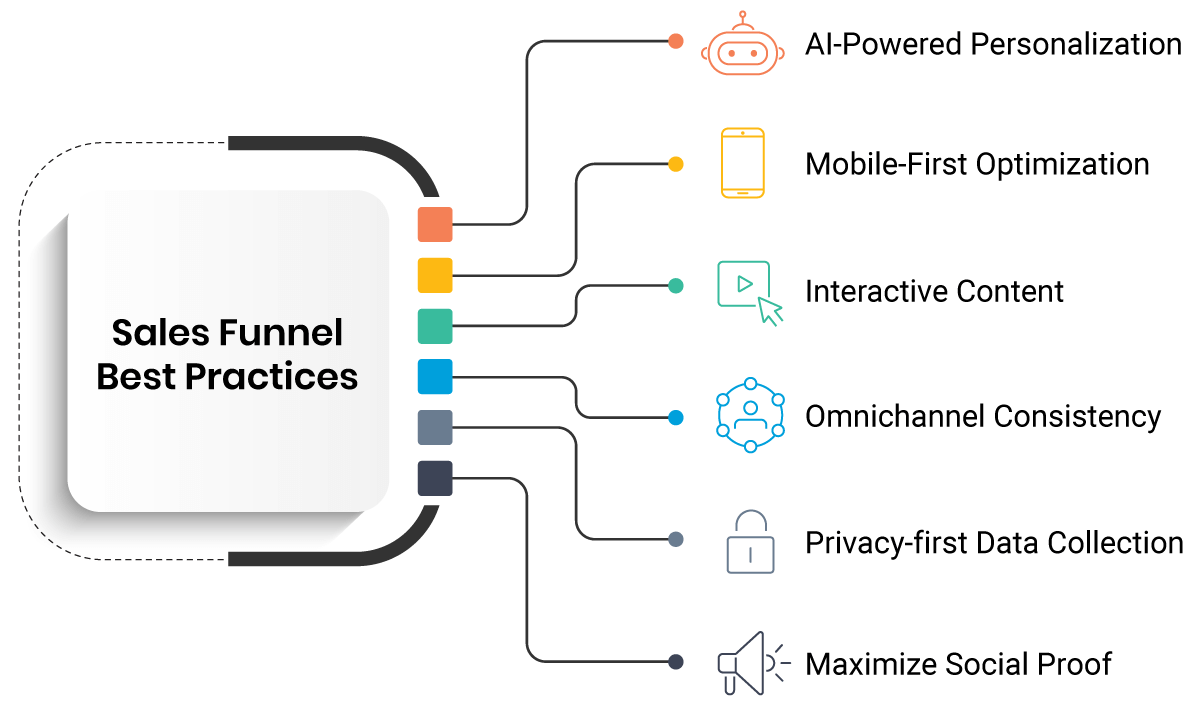
AI-powered personalization – Tailor customer interactions through AI-driven insights, from personalized product recommendations to chatbot-driven engagement to automating internal lead scoring.
Mobile-first optimization – Ensure every stage of the funnel is seamless on mobile devices, as more customers shop and research via smartphones.
Interactive content – Engage prospects with quizzes, calculators, conversational marketing with live chat and messaging, and even augmented reality (AR) experiences that make decision-making more immersive and help close deals faster.
Omnichannel consistency – Maintain a cohesive brand experience across websites, social media, email, ads, direct sales, and messaging platforms.
Privacy-first data collection – Build trust by leveraging ethical, first-party data rather than relying on outdated tracking methods.
Maximize social proof – Showcase authentic testimonials, case studies, and user-generated content to build trust.
By integrating these modern strategies, businesses can refine their sales funnels to meet evolving consumer expectations, staying competitive in an increasingly digital landscape.
Final Thoughts
A well-structured sales funnel is essential for SMB growth in 2025. By understanding your audience, nurturing leads effectively, and optimizing conversions, you can create a system that drives sustainable business growth.
In today’s fast-paced market, success isn’t about just attracting customers—it’s about guiding them through a carefully designed journey that nurtures trust, eliminates friction, and builds lasting relationships. A well-optimized sales funnel doesn’t just increase conversions; it creates loyal advocates who drive long-term business growth.
“The most effective sales funnels aren’t static monuments but living systems that evolve with your customers and market conditions. In today’s data-rich environment, not leveraging data-driven intelligence to support sales funnel development and execution is like leaving money on the table.”
— Rob Martin, GM, Salesgenie
Your sales funnel should continuously evolve based on customer feedback and performance data. The most successful businesses analyze, test, and refine their funnel regularly.
By understanding each stage—Awareness, Interest, Consideration, Conversion, and Retention—SMBs can craft a strategy that speaks directly to their ideal audience’s needs, ensuring every step of the journey feels seamless and rewarding.
The question isn’t whether you need a sales funnel—it’s how effectively you’ll build one that not only converts but also sustains growth in 2025 and beyond.
Ready to Build Your Winning Sales Funnel?
With tools like Salesgenie providing targeted lead data and CRM integration, businesses can take their sales funnels to the next level—automating, personalizing, and optimizing at scale.
Salesgenie provides the high-quality lead data, CRM integrations, and analytics needed to build and optimize a high-converting sales funnel.
Start building your sales funnel today with a free trial of Salesgenie!

